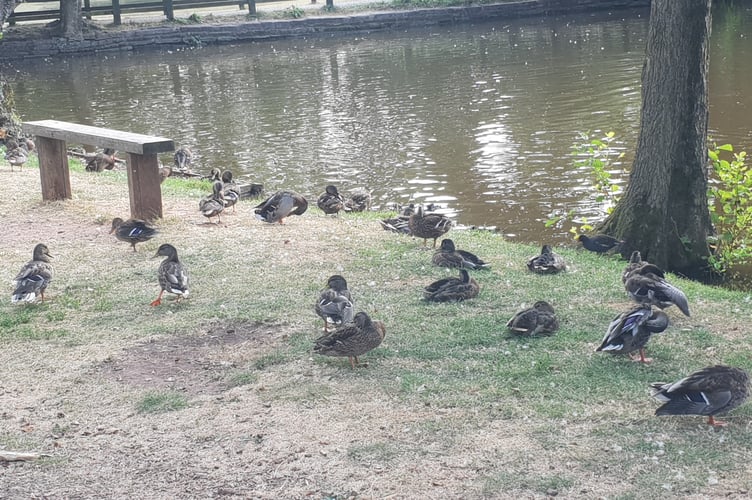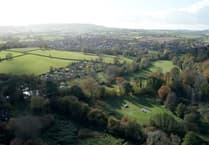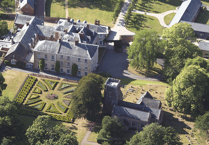A RECORD number of swans appear to have made their home at a Wellington wildlife and nature site this year.
The Basins currently has up to 11 of the huge birds on its two ponds, in addition to hundreds of ducks and a large number of moorhens.
The area around The Basins is outside the land being leased to the town council, as that parcel of land starts beyond the gate leading to Rockwell Green.
The Basins is looked after and maintained by members of the Wellington Basins Volunteer Group (WBVG) who preserve and conserve what was once a neglected and overgrown area of land and backwaters.
But WBVG member Lesley Andrews did not want to take credit for the volunteers’ work being responsible for so many swans this year.
Ms Andrews told the Wellington Weekly: “At the moment there are nine swans and appear to include the cygnets from last year.
“As far as I know, this is the largest number that have taken up residence at The Basins.
“The public seem to get a lot of pleasure from them being there.”
WBVG members have been working since 1978 at The Basins to keep the area looking good.
Ms Andrews said: “It is greatly appreciated by the public as many people stop and comment on their work, the area is such a bonus to the town.”
She said although people were not encouraged to feed the swans and ducks with bread, it was something that had been happening for years.
However, she warned: “It is in the swan’s nature be aggressive, but they are also keen to eat when offered food.”
Another WBVG member, Pamela Clare, said the number of swans was increasing because they kept on breeding.
Only one of six cygnets from two years ago had left The Basins, despite the male’s efforts to chase them out.
Ms Clare said: “Even today he was charging around exerting his authority.
“People keep on feeding them, so they have no desire to leave.

“They all seem to get on if they keep their distance, but it will be interesting to see what happens in the spring when we have another brood.”
Sue Adams, who also volunteers with the WBVG, said: “It is interesting to reflect that in the time when the area was kept by the Fox family, 1840s, it required three full-time workers to operate the weirs and sluices to keep the correct water levels and flow rates.
“A team of volunteers now regularly work in the Basins area, not only maintaining the ponds and streams but also monitoring the safety of walkways.”
Ms Adams said the area was used by many people for different reasons, some who liked to fish, others who walked their dogs, or people who took advantage of the scenery and those who took photographs.
She said: “It is a very popular area for families, particularly those with children who like to feed the swans and other wildfowl.
“This year, the population of swans and cygnets has grown in numbers to 11 in total.
“The cygnets from last year and the year before have stayed on due to feeling that they are in a safe place.
“They also know that they will be well fed by the public.
“The feeding of the swans is a very satisfying activity, but the general advice given is that they should not be fed with white bread but with proper wildfowl food.
“It also discourages rats feeding on bits of food left around the ponds.”
Ms Adams said wildfowl food could be obtained with a donation from a coffee van which frequently parked in the area.
“We are lucky that The Basins provides not only a safe haven for wildlife but pleasure and leisure for the public,” she said.
As well as the swans, ducks, and moorhens, The Basins is home to a wide variety of other bird life, including coots, kingfishers, wagtails, reed buntings, dippers, and owls, plus wildlife such as rabbits, squirrels, foxes, and five different types of bat.




